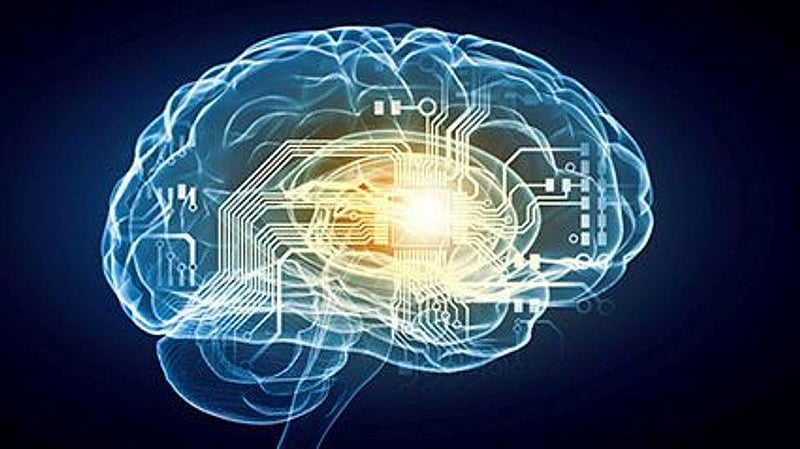Get Healthy!

- Amy Norton
- Posted September 23, 2021
Signs of Early Alzheimer's May Be Spotted in Brain Stem
Certain changes in a part of the brain stem, visible in scans, might be a potential early indicator of Alzheimer's disease, a new study suggests.
Using different brain imaging techniques, researchers found that lesser "integrity" in the brain stem region was linked to a faster decline in memory and thinking in older adults, as well as certain brain changes seen in early Alzheimer's.
The research -- published Sept. 22 in the journal Science Translational Medicine -- is the latest in a broad effort to find "biomarkers" that could aid in earlier Alzheimer's diagnosis.
Biomarkers are things that can be measured to reliably detect a disease -- a substance in the blood or a brain scan finding, for instance.
Right now, most people with Alzheimer's are diagnosed based on evaluations of their memory, reasoning and other thinking skills, said Rebecca Edelmayer, senior director of scientific engagement for the Alzheimer's Association.
But researchers, she said, are working to better understand the underlying disease process and, along the way, find biomarkers that catch Alzheimer's sooner.
Potentially, there are various ways to do that -- including brain imaging and measuring certain substances in the cerebrospinal spinal fluid or blood. Some of those tools are already being studied and, in some cases, used in patient care.
Edelmayer, who was not involved in the new study, called it "very interesting."
It highlights a potential early marker that could help distinguish "normal" brain aging from a disease process, she said.
The study focused on a brain stem area known as the locus coeruleus, or LC. Past studies, of brain autopsies, have indicated that the LC is the first site in the brain to be hit with an abnormal accumulation of tau.
Tau is a protein present in healthy brain cells. But abnormal versions of tau -- ones that cling to other tau proteins -- can form as well. In people with Alzheimer's, the brain becomes riddled with tau "tangles," as well as "plaques," which are abnormal clumps of another protein called amyloid.
Unlike amyloid buildup, which is seen later in life, accumulation of tau often starts early. In fact, research suggests that about half of 30- to 40-year-olds have tau accumulation in the LC, said Heidi Jacobs, the study's lead researcher.
But whether that is actually part of a disease process has been unclear, explained Jacobs, an assistant professor at Harvard Medical School and Massachusetts General Hospital in Boston.
The new findings, she said, bolster the case that it is.
The results are based on 174 older, mostly cognitively healthy, adults. All had MRI scans to gauge the "integrity" of the LC. It's not possible, Jacobs explained, to directly measure tau in the LC because of its small size. But recent advances in MRI technology allow a measure of the area's integrity, which may reflect tau buildup.
Besides those MRI scans, participants also underwent PET imaging. There the aim was to find any tau and amyloid accumulation in other areas of the brain implicated in the early Alzheimer's process. Finally, their memory and other thinking abilities were tested repeatedly for up to eight years.
Piecing all of that information together, researchers found that a picture emerged.
Overall, lesser integrity of the LC was related to tau accumulation in a brain area involved in memory called the entorhinal cortex. Lesser LC integrity was also linked to a quicker decline in study participants' thinking skills.
That does not prove tau buildup in the LC kicks off the whole process, according to Jacobs. But it identifies LC integrity as a potential marker to predict Alzheimer's-related decline.
Even though Alzheimer's has no cure, having early markers that reliably spot people on a trajectory toward the disease is considered critical. For one, the markers could be used to identify participants for clinical trials testing new Alzheimer's treatments.
That can already be done with PET imaging, Jacobs noted -- but it's possible that LC integrity could identify potential study participants at an earlier point.
One reason past treatment trials have failed, Jacobs said, may be that they were treating people "too late."
While many people may have heard of the amyloid plaques that mark Alzheimer's, Edelmayer said it's actually tau accumulation that more closely correlates with cognitive decline. And it's thought that an interaction between the proteins, and other factors, may be at work.
"There really is a cascade of events that happens 10 to 20 years before the clinical signs of Alzheimer's," Edelmayer said.
Any technology that can reliably detect changes along that path could potentially lead to earlier diagnosis, she said.
More information
The Alzheimer's Association has more on progress toward earlier Alzheimer's diagnosis.
SOURCES: Heidi Jacobs, PhD, assistant professor, radiology, Harvard Medical School, and Massachusetts General Hospital Center for Medical Imaging, Boston; Rebecca Edelmayer, PhD, senior director, scientific engagement, Alzheimer's Association, Chicago; Science Translational Medicine, online, Sept. 22, 2021







